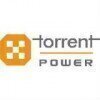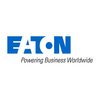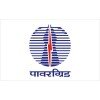Filter interviews by
Assystem Interview Questions and Answers
32 Interview questions
In my previous role, I handled various use cases involving threat detection, incident response, and compliance monitoring.
Developed a real-time monitoring system to detect anomalies in network traffic, reducing response time by 30%.
Implemented a SIEM solution that aggregated logs from multiple sources, improving incident response efficiency.
Conducted regular security assessments and vulnerability scans, identifyin...
BBS stands for Bar Bending Schedule, which is a detailed list of reinforcement bars with their lengths and shapes required for construction.
Prepare detailed drawings showing the shape, size, and spacing of reinforcement bars as per structural drawings
Calculate the total quantity of each type of reinforcement bar required
List down the cutting length of each bar and bending details
Organize the information in a tabul...
The process to check Joint measurements involves verifying dimensions and alignment of joints in construction projects.
Verify dimensions of joints using measuring tools such as tape measures or laser levels
Check alignment of joints by ensuring they are straight and level
Compare measurements to project specifications to ensure accuracy
Document measurements and any discrepancies for record keeping
Consult with projec...
Rate analysis is the process of determining the rates of various items of work to calculate the cost of a project.
Rate analysis involves breaking down the cost of materials, labor, and equipment for each item of work in a project.
It helps in estimating the total cost of a project and in preparing accurate project budgets.
Rate analysis is essential for comparing different bids from contractors and ensuring fair pri...
Water ratio refers to the proportion of water in a mixture or solution.
Water ratio is typically expressed as a percentage or ratio of water to the total mixture.
It is commonly used in various industries such as construction, agriculture, and food production.
For example, a concrete mix may have a water ratio of 0.5, meaning there is half as much water as other ingredients.
One way slab is supported on two opposite sides only, while two way slab is supported on all four sides.
One way slab bends in only one direction, while two way slab bends in both directions.
One way slab is designed with main reinforcement in one direction only, while two way slab has main reinforcement in both directions.
Examples: One way slab - balcony slab. Two way slab - flat slab in a building.
The layout of building points is determined by using surveying equipment and techniques to mark the location of key points on the ground.
Start by establishing a reference point using GPS or total station.
Use measuring tapes, levels, and theodolites to mark out the building corners and key points.
Ensure accuracy by cross-checking measurements and using benchmarks for elevation.
Consider factors like setbacks, utilit...
Pile and pile cap design involves determining the size and layout of piles to support the structure above.
Calculate the loads and determine the required pile capacity
Select the type and size of piles based on soil conditions and structural requirements
Design the pile cap to distribute the loads from the structure to the piles efficiently
Consider factors such as settlement, lateral loads, and seismic forces in the ...
Shear walls can be modelled and designed using structural analysis software and following building codes.
Model shear walls using structural analysis software such as ETABS or SAP2000
Consider the material properties, dimensions, and boundary conditions of the shear wall
Design the shear wall based on the applied loads and building codes
Ensure proper reinforcement detailing for the shear wall to resist lateral forces
...
Chimney in power plant is used to release the exhaust gases produced during the combustion process.
Chimney helps in maintaining the air quality by releasing the harmful gases at a higher altitude.
It prevents the accumulation of toxic gases in the plant and surrounding areas.
The height of the chimney is designed based on the amount of gases produced and the wind speed in the area.
Chimneys can also be equipped with ...
Assystem Interview Experiences
46 interviews found
I applied via Referral and was interviewed in Jun 2024. There were 3 interview rounds.
(2 Questions)
- Q1. Introduce your self
- Ans.
I am a passionate and experienced Design Engineer with a strong background in mechanical engineering.
Graduated with a degree in Mechanical Engineering
Worked at XYZ Company for 5 years designing innovative products
Proficient in CAD software such as SolidWorks and AutoCAD
Strong problem-solving skills and attention to detail
Collaborated with cross-functional teams to bring projects to completion
- Q2. Why you select in civil engineering
- Ans.
Passion for designing structures and solving complex problems led me to choose civil engineering.
Passion for designing structures
Interest in solving complex problems
Desire to contribute to infrastructure development
Fascination with construction projects
Inspiration from iconic architectural landmarks
(2 Questions)
- Q1. What is water ratio
- Ans.
Water ratio refers to the proportion of water in a mixture or solution.
Water ratio is typically expressed as a percentage or ratio of water to the total mixture.
It is commonly used in various industries such as construction, agriculture, and food production.
For example, a concrete mix may have a water ratio of 0.5, meaning there is half as much water as other ingredients.
- Q2. What is the estimation for 1 BHK
- Ans.
The estimation for a 1 BHK varies depending on location, size, amenities, and other factors.
Estimation for 1 BHK can range from $50,000 to $500,000 or more.
Factors affecting the estimation include location (urban vs rural), size of the apartment, amenities provided, and demand in the area.
For example, a 1 BHK in a prime location in a metropolitan city will cost more than a similar apartment in a suburban area.
(2 Questions)
- Q1. You know that which is the company and their importance
- Q2. Salary criteria
Interview Preparation Tips
(2 Questions)
- Q1. How did you saved project cost.
- Ans.
I saved project costs by optimizing resource allocation, negotiating with vendors, and implementing cost-effective solutions.
Optimized resource allocation to reduce unnecessary expenses
Negotiated with vendors for better pricing and discounts
Implemented cost-effective solutions without compromising quality
Utilized technology to streamline processes and reduce manual labor costs
- Q2. Explain Rate analysis
- Ans.
Rate analysis is the process of determining the rates of various items of work to calculate the cost of a project.
Rate analysis involves breaking down the cost of materials, labor, and equipment for each item of work in a project.
It helps in estimating the total cost of a project and in preparing accurate project budgets.
Rate analysis is essential for comparing different bids from contractors and ensuring fair pricing.
...
Interview Preparation Tips
(2 Questions)
- Q1. Say something about yourself
- Ans.
I am an organized and detail-oriented professional with a passion for creating efficient office environments.
Over 5 years of experience in office management, ensuring smooth daily operations.
Skilled in budgeting and financial management, having reduced office expenses by 15% in my previous role.
Proficient in various office software, including Microsoft Office Suite and project management tools like Asana.
Strong communi...
- Q2. Say about your working experience
- Ans.
I have over five years of experience managing office operations, enhancing efficiency, and supporting team collaboration.
Managed daily office operations, ensuring smooth workflow and timely completion of tasks.
Implemented a new filing system that reduced document retrieval time by 30%.
Coordinated team meetings and events, improving communication and collaboration among staff.
Oversaw inventory management, ensuring that ...
(2 Questions)
- Q1. What is your expected salary
- Q2. What is your preferred job location
- Ans.
I prefer a job location that fosters collaboration, is easily accessible, and has a positive work environment.
Proximity to public transport for easy commuting, like being near a subway station.
A vibrant office culture that encourages teamwork and creativity, such as open-plan spaces.
Access to amenities like cafes and parks for breaks and relaxation, enhancing work-life balance.
A location that aligns with my personal va...
I appeared for an interview in Dec 2024.
Tool test based on experience
Interview Preparation Tips
(1 Question)
- Q1. What was your previous projects
Interview Preparation Tips
I appeared for an interview in Sep 2024, where I was asked the following questions.
- Q1. What is SIEM , EDR, XDR and difference
- Q2. Use cases in previous company
- Ans.
In my previous role, I handled various use cases involving threat detection, incident response, and compliance monitoring.
Developed a real-time monitoring system to detect anomalies in network traffic, reducing response time by 30%.
Implemented a SIEM solution that aggregated logs from multiple sources, improving incident response efficiency.
Conducted regular security assessments and vulnerability scans, identifying cri...
- Q3. Normal definitions
Interview Preparation Tips
I applied via Indeed and was interviewed in Dec 2023. There was 1 interview round.
(1 Question)
- Q1. How to layout of building points
- Ans.
The layout of building points is determined by using surveying equipment and techniques to mark the location of key points on the ground.
Start by establishing a reference point using GPS or total station.
Use measuring tapes, levels, and theodolites to mark out the building corners and key points.
Ensure accuracy by cross-checking measurements and using benchmarks for elevation.
Consider factors like setbacks, utilities, ...
I appeared for an interview before Mar 2024, where I was asked the following questions.
- Q1. Binary search questions, missing number
- Q2. DB design, Java hashmap, arraylist working
I applied via Company Website and was interviewed in May 2023. There were 2 interview rounds.

(4 Questions)
- Q1. Construction quality related Questions
- Q2. Flexible and Rigid pavement question and Mix design, IIT pave etc
- Q3. Role in Quality
- Q4. What is perpetual pavement

(5 Questions)
- Q1. Maintenance Works, Watching mechiner
- Q2. Tugs periodically maintenance Site Electrical works , Daily mechiner maintenance check list maintaing.
- Q3. Crawler cranes Assemblying.
- Q4. Rig mechine maintenance & Assemblying
- Q5. Excavator70 to 1200 daily maintenance
Interview Preparation Tips
Apply even if you're not fully qualified. ...
Job search like it's your job. ...
Use informational interviews to network. ...
Set yourself apart with letters of recommendation. ...
Know yourself and what you want. ...
Pump yourself up and stay positive.
Top trending discussions






Assystem Interview FAQs
The duration of Assystem interview process can vary, but typically it takes about less than 2 weeks to complete.
Tell us how to improve this page.
Assystem Interviews By Designations
- Assystem Design Engineer Interview Questions
- Assystem Bridge Design Engineer Interview Questions
- Assystem Structural Design Engineer Interview Questions
- Assystem Graduate Engineer Trainee (Get) Interview Questions
- Assystem Site Engineer Interview Questions
- Assystem Software Engineer Interview Questions
- Assystem Structural Engineer Interview Questions
- Assystem Project Engineer Interview Questions
- Show more
Interview Questions for Popular Designations
Overall Interview Experience Rating
based on 40 interview experiences
Difficulty level
Duration
Interview Questions from Similar Companies
Assystem Reviews and Ratings
based on 687 reviews
Rating in categories
Hyderabad / Secunderabad,
Gurgaon / Gurugram
8-13 Yrs
Not Disclosed
12-14 Yrs
Not Disclosed
|
Design Engineer
81
salaries
| ₹5 L/yr - ₹11 L/yr |
|
Structural Design Engineer
56
salaries
| ₹5.5 L/yr - ₹13.8 L/yr |
|
Consultant Engineer
50
salaries
| ₹4.8 L/yr - ₹9 L/yr |
|
Senior Engineer
35
salaries
| ₹7 L/yr - ₹12 L/yr |
|
Assistant Design Engineer
34
salaries
| ₹3 L/yr - ₹6 L/yr |

Suzlon Group

Torrent Power

Eaton

Vestas
- Home >
- Interviews >
- Assystem Interview Questions













